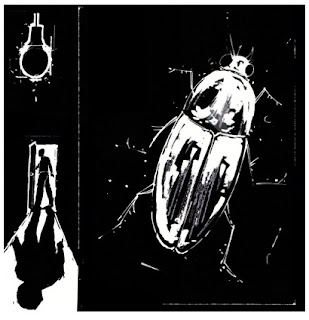Surprisingly, I did really well on my blog post on William Blake's "A Little GIRL Lost" even though I did not feel confident about it. This essay demonstrated mastery on application of theory, media, and visual design. I still didn't do my best because I only demonstrated some mastery on my thesis, clarity, organization, comparative analysis, and grammar/mechanics; and no mastery on citation, and integration of sources. Even though this essay was not perfect I still made some progress and improvements from my previous blog the diagnostic essay.
For this next blog post I had to create a Comparative Analysis with a gender studies literary theory on Franz Kafka's "The Metamorphosis" and Carlos Atanes film version of "The Metamorphosis". This analysis was my worst essay by far! I only demonstrated mastery in grammar/mechanics and demonstrated some mastery on media, and visual design. Unfortunately, I demonstrated NO mastery on my thesis, clarity, organization, application of theory, comparative analysis, integration of sources, and citation. This essay was a big turning point for me as I started to feel like this class was just too hard, but I wasn't ready to give up. The class was given the opportunity to revise one of our essays and I chose to revise this comparative analysis. For my Revised Comparative Analysis I made a lot of improvements from the original one above. I demonstrated some mastery on clarity, thesis, organization, application of theory, comparative analysis, grammar/mechanics, media and visual design. I demonstrated no mastery only on my integration of sources, and citation. I wasn't completely happy with my results but I was happy that I made much needed progress.
The blog post that I did the absolute best on was my Shakespeare analysis of "A Midsummer Night's Dream" with a gender studies literary theory. When I was writing this essay I thought it was horrible and didn't feel confident with it at all. Come to find out, I did outstandingly well on it! I demonstrated perfect mastery on my thesis, application of theory, grammar/mechanics, and citation. I demonstrated some mastery on clarity, integration of sources, and organization. The only thing I did not demonstrate mastery on was media and visual design. There is no doubt that this is my best essay because I made huge improvements and progress from all of my other essays.
In conclusion, as you can tell I did have a lot of things I needed to improve on. Some essays were better then others and some were worst. But most of all I didn't give up and I completed the course. I learned a lot from this course and I will continue to learn more about writing in the future. Never expect the unexpected!
Thanks Mrs. Sasser!







